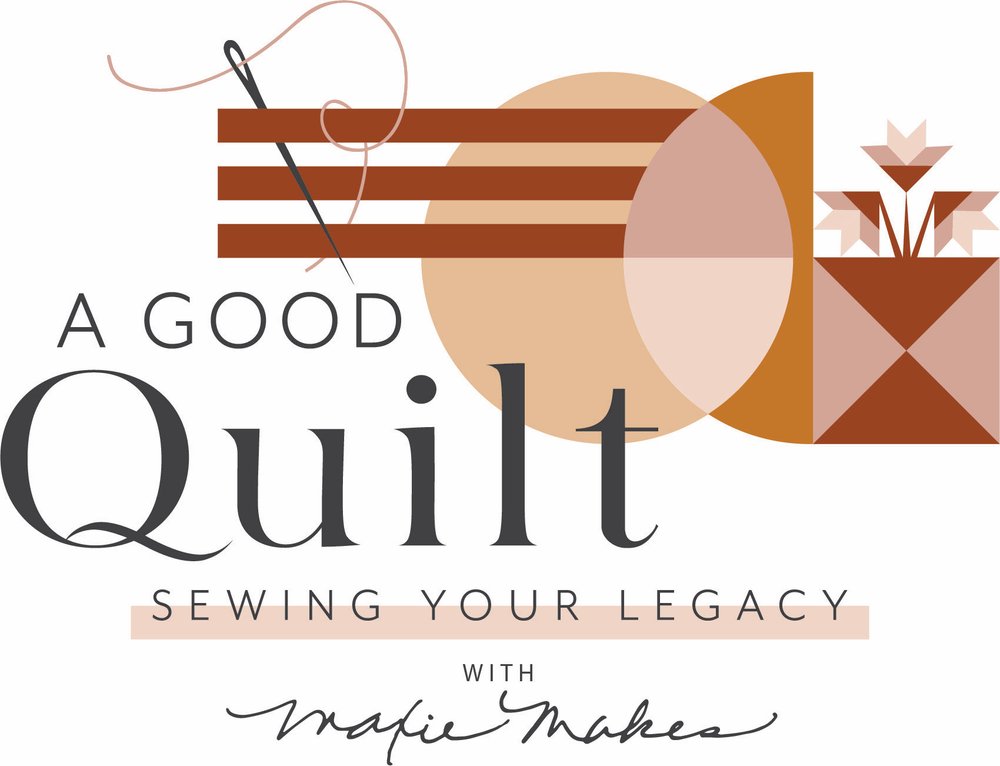I've heard these soft little baby blankies called Church Toys because: 1) they're small enough to carry in your purse; 2) because the ribbons and soft fabrics pacify the baby, and, 3) because if it's dropped in church it won't make a sound! While they are great on the go, they are also a must-have at home, too. I made my new grandson, Bear, a couple of them so he could keep one in the diaper bag and have another always available. I'll show you how easy they are to make! But first, a word about the fabrics I've used today.
I've been anxiously awaiting my daughter's (Bonnie Christine) newest fabric line, Hello, Bear, to arrive, and it was delivered today! The fabric tells a story of woodland creatures and adventure, but the deeper story is that it was all inspired by her sweet son, Bear!
The fabric requirements are minimal, with a small square or rectangle for the top (mine is about 12" x 14", a plush Minkee for the back, and about twenty to thirty 1/8 yard cuts of assorted ribbons. Bonnie also designs ribbons for Renaissance Ribbons, so you know that I had to use them here!
Cut a square or rectangle of your focus fabric for the front of your blankie. This one is larger than I usually make them, but I wanted to get every forest creature in! To make sure it’s nice and straight, I cut it on a mat with a rotary cutter, placing the ruler on the lines on the mat to make the cuts.
Next, lay it on top of the backing and trim the backing to the exact size as the front. Minkee, a knit fabric with an incredibly soft nap, is the perfect choice for these little quilts.
Now…you need ribbons! Lots of charming ribbons! Exactly how many is determined by how large your blankie is. You’ll want a ribbon about every 2”, and each piece only needs to be about 4” long. I have lots of ribbons in my quilt shop, and my favorites are from Renaissance Ribbons. Arrange them to your liking around the edges of your top. This is just a trial run to determine placement, don’t pin them in place yet. (See above photo.)
Lay the Minkee (or backing) fabric right side up. Fold your 4” ribbons in half, wrong sides together and pin in place, matching the cut edges of the ribbon with the cut edges of the backing. (The fold is laying inside the square, as in the photo above.) Don't fuss too much with the placement; keeping the distance between them a little uneven adds to the charm. (Right?)
A walking foot will be very helpful for this next step. A walking foot has a set of feed dogs on the bottom of it that work in conjunction with the feed dogs on your sewing machine. It feeds the top layer of fabric to the needle, while the machine’s feed dogs feed the bottom layer to the needle. This results in both layers reaching the needle at the same time. A lot of people ask me what a walking foot looks like, so here is a picture of mine (above left). Stitch the ribbons in place, with a seam allowance just shy of 1/4" (right picture).
Next, lay the Minkee, right side up, on your workspace. Place the quilt top, right side down, over the Minkee. Match the edges, making sure the ribbons remain tucked inside. Pin in place. Stitch around the blankie with a 3/8" seam allowance, leaving a 3” opening on one side for turning.
Trim the corners at an angle to remove bulk from the seam allowance. Turn right side out, using a point turner to get the corners turned sharply. (My favorite point turner.) Press well. Stitch around the entire outer edge, about 1/4" from the edge, enclosing the opening left for turning with this stitching.
And that's it! I made two in a jiffy. The one on the left also features Bonnie's fabrics and the ribbons are all from her collection. The one on the right is also made from Hello, Bear, with an assortment of ribbons by several designers. Want another tip? When I made Bear's blankies, I attached a teething ring to one of the ribbons. It made it easy for him to pick it up and I so enjoyed watching him go for the ring!
Thanks for visiting! Happy Sewing and God bless! Maxie



































